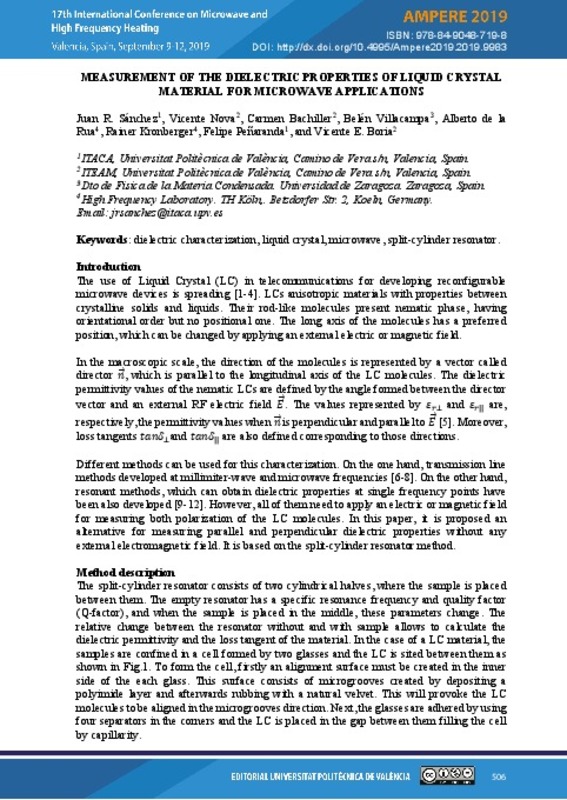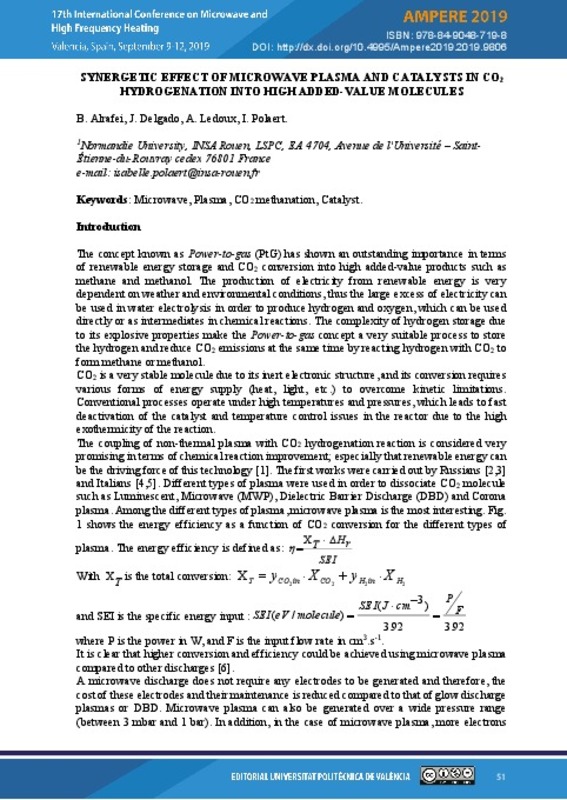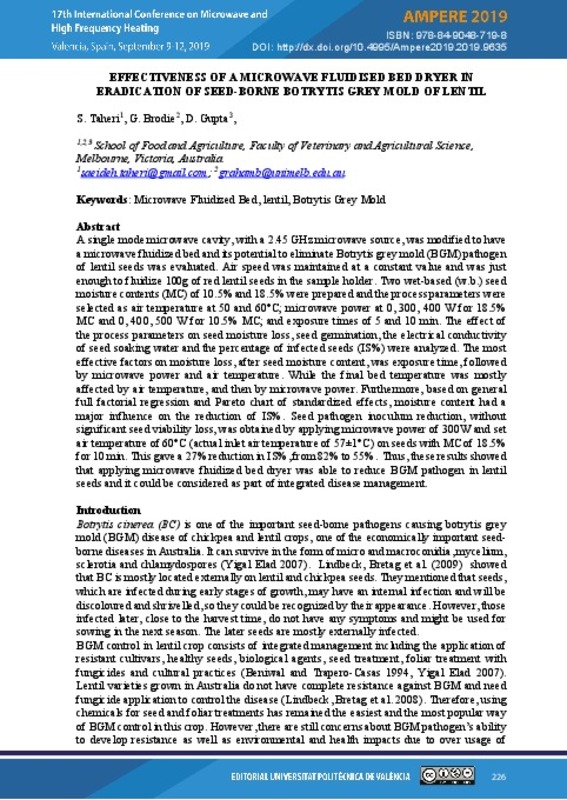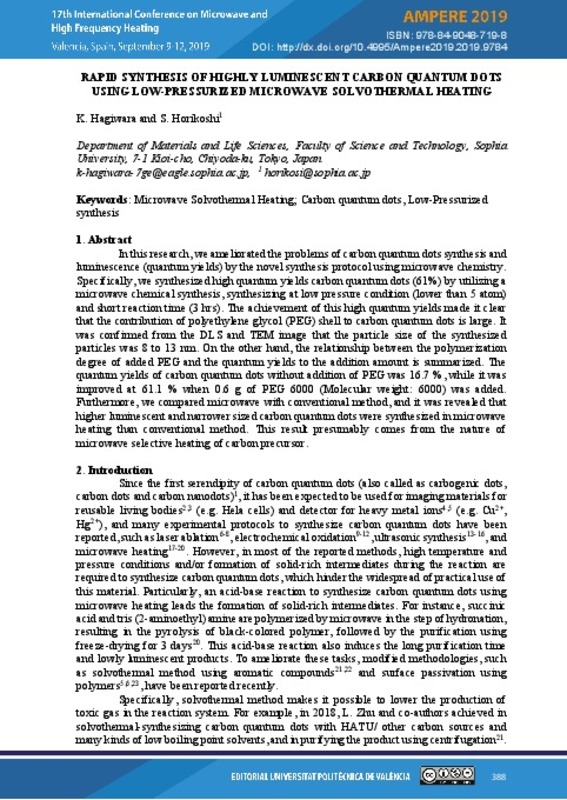|
Resumen:
|
[EN] Liquid Crystal (LC) is an anisotropic liquid material which flows like a liquid, but at the same time its molecules have an orientational order like in the solid state [1]. Thus, LC is a promising dielectric material ...[+]
[EN] Liquid Crystal (LC) is an anisotropic liquid material which flows like a liquid, but at the same time its molecules have an orientational order like in the solid state [1]. Thus, LC is a promising dielectric material for designing reconfigurable devices at microwave frequencies. In order to optimize the design of reconfigurable microwave devices, accurate values of the dielectric permittivity and the loss tangent of LCs are needed. However, new LCs are not well characterized at these frequencies because of its recent use for microwave applications. Therefore, the characterization in this frequency range is required for its practical use within microwave components and devices [2]. In this work, the split-cylinder resonator method has been used for the characterization of LCs at two frequency points, i.e. 5 and 11 GHz. The method is based on the measurement of the resonance frequency and quality factor of the two states of the LC molecules for extracting the complex dielectric permittivity [3]. For achieving these two states, no electric or magnetic fields are needed, just the cell must be turned 90º inside the cavity. The dielectric properties (permittivity and loss tangent) of four different LC samples, GT3-23002 from Merck and QYPD193, QYPD142, and QYPD036 from Qingdao QY Liquid Crystal Co, have been obtained. The highest values of the dielectric anisotropy are presented for the samples QYPD036 and QYPD193, together with the highest values of the corresponding loss tangent parameters. Furthermore, it is observed for all the LCs that the loss tangent decreases and the dielectric anisotropy increases at higher frequencies, which must be taken into account in the development of reconfigurable microwave devices.
[-]
|












